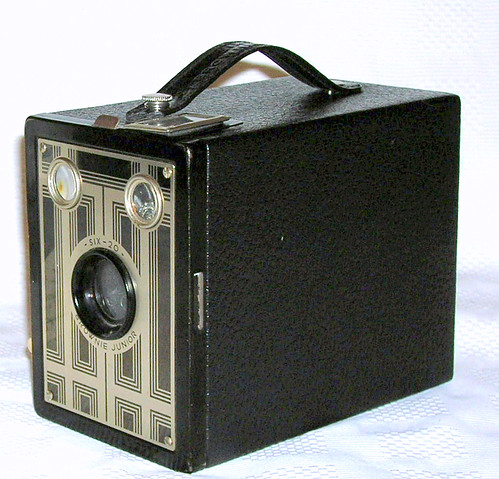Difference between revisions of "Kodak Six-20 Brownie Junior"
Hanskerensky (talk | contribs) (Added categories) |
|||
| Line 33: | Line 33: | ||
* [http://www.brownie-camera.com/manuals/six20andsix16bjunior.pdf Six-20 Brownie Junior manual] (PDF), from [http://www.brownie-camera.com/index.shtml The Brownie Page] | * [http://www.brownie-camera.com/manuals/six20andsix16bjunior.pdf Six-20 Brownie Junior manual] (PDF), from [http://www.brownie-camera.com/index.shtml The Brownie Page] | ||
* [http://www.brownie-camera.com/manuals/six20bjunioruk.pdf Manual] (PDF) of UK version Six-20 Brownie Junior, from [http://www.brownie-camera.com/index.shtml The Brownie Page] | * [http://www.brownie-camera.com/manuals/six20bjunioruk.pdf Manual] (PDF) of UK version Six-20 Brownie Junior, from [http://www.brownie-camera.com/index.shtml The Brownie Page] | ||
| − | |||
| − | |||
| − | |||
| − | |||
[[Category:6x9 box]] | [[Category:6x9 box]] | ||
[[Category:Kodak|Six-20 Brownie Junior]] | [[Category:Kodak|Six-20 Brownie Junior]] | ||
| + | [[Category:S|Six-20 Brownie Junior Kodak]] | ||
[[Category:1934]] | [[Category:1934]] | ||
| + | [[Category:620 film]] | ||
Revision as of 05:51, 16 May 2022

|
| KODAK Six-20 Brownie Junior image by jgs4309976 (Image rights) |
The Six-20 Brownie Junior was made by Kodak from 1934 to 1942[1], as a model for 2¼×3¼" images on 620 film. It was apparently manufactured in the US, Canada, and England; and several variations exist[2].
Inexpensive cardboard bodies helped make Kodak's early Brownies a success. But while an entirely-cardboard Six-20 Brownie Junior is known, most improve on the way the camera was manufactured with increasing use of metal (in place of wood), while still remaining true to the Brownie principles of simple construction and operation.
The Art Deco version seen here was perhaps the most popular one. (Another Deco version is known which is not marked with the model name.) Others have plain black fronts, including a "Super" model.
Some Six-20 Brownie Juniors lack any aperture or focus adjustment; and simply have an Instant/Time switch for the shutter. But more advanced versions offer a pull-out control which move close-up lenses or a smaller diameter aperture stop into place. (Such a simple camera does not use an iris diaphragm.)

|
| Plain black front version image by photoli2009 (Image rights) |
Notes
- ↑ As listed in "History of KODAK Cameras" (archived) from Kodak's website.
- ↑ The Brownie Camera Page identifies an Art Deco, a plain black, a "Super", and a Portrait version.
Links
- Six-20 Brownie Junior at the website of the George Eastman Museum
- The Kodak box Brownie Camera Page by Remy Steller
- Six-20 Brownie Junior manual (PDF), from The Brownie Page
- Manual (PDF) of UK version Six-20 Brownie Junior, from The Brownie Page